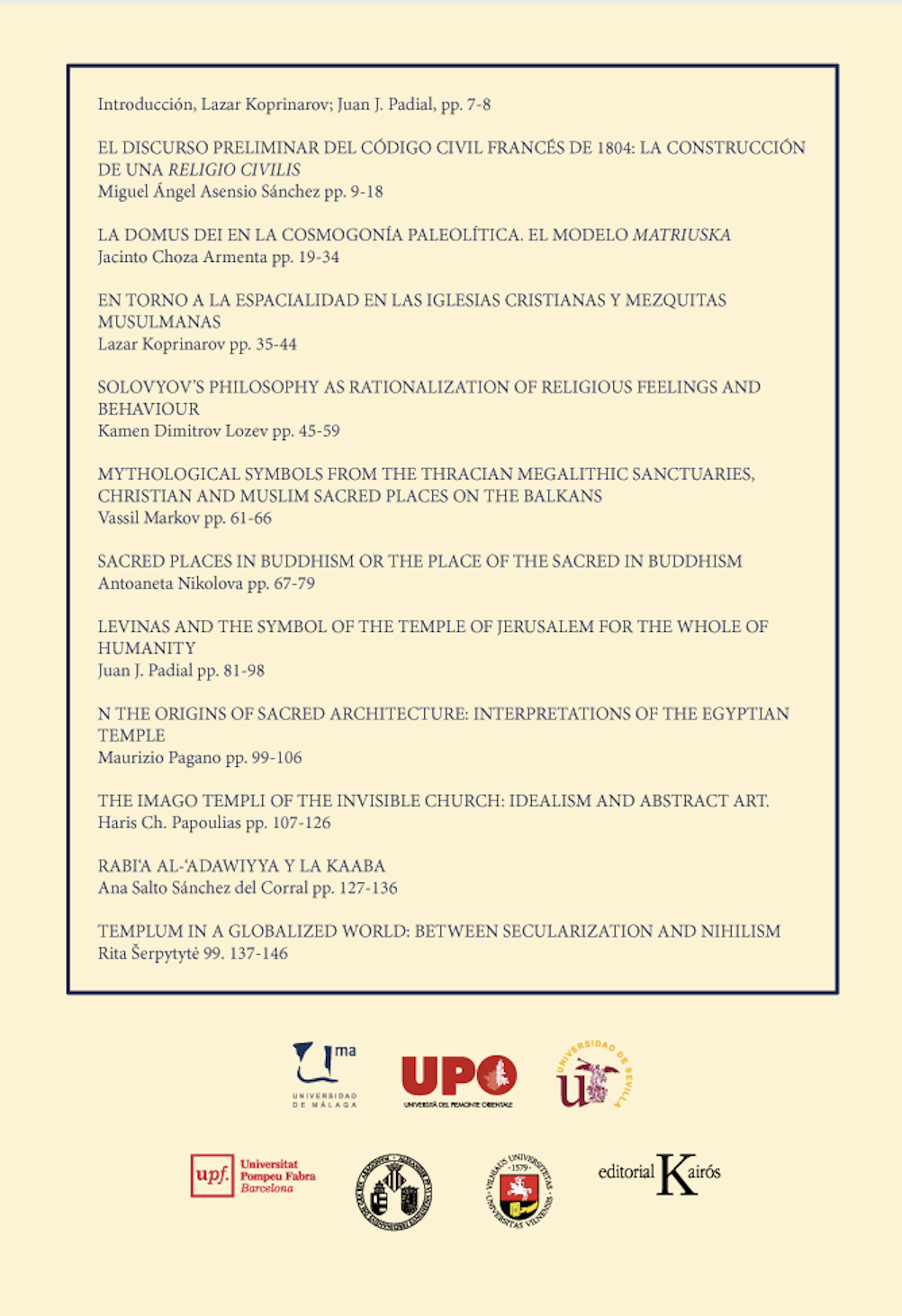THE IMAGO TEMPLI OF THE INVISIBLE CHURCH: IDEALISM AND ABSTRACT ART.
DOI:
https://doi.org/10.24310/Raphisa.2017.v1i2.4339Keywords:
Rothko, Hegel, Abstract Art, Idealism, Invisible ChurchAbstract
Two events, apparently distant one from the other and without any direct link between them, but nevertheless strictly connected by a common spiritual legacy, constitute the subject of this paper. The first one, took place in 1971, when a very special «ecumenical chapel» opened its doors to the public. It is known under the name of «Rothko Chapel», due to the general project, undertaken by the painter Mark Rothko. Since that time, it has become one of the most precious artworks that represent the contemporary religious aesthetics. The black Rothko’s paintings, the Greek-cross building designed by the architect Philip Johnson, the Broken Obelisk of the artist Barnett Newman standing right out of the Chapel and the music composed for this ambient by the composer Morton Feldman, have replaced what traditionally has been called an «imago templi»; but contrary to all Christian tradition they represent (literally) no-thing. The second event, took place in 1795, when two young friends, Hegel and Schelling, were making a kind of oath under the sign of an Invisible Church, actualizing an ambiguous concept that, even if rooted in the Holy Scriptures, it had been condemned for its consequences as heretical. The relationship between these two events is given by contemporary art historians which have established that modern abstract painting, from a formal point of view, is rooted in the Romantic tradition. With this paper I would like to contribute to the establishment of this connection, not only by formal means, but by showing a common spiritual attitude towards images. Christianity, essentially figurative in its religious aesthetics, has always had to deal with the Jewish prohibition of image-making. This difficulty has been inherited to contemporary debates in which artist with classical readings and education, often of Jewish origins but active in Christian societies, try to create a new kind of art, above all traditions and free of dogmas. According to my suggestion, Rothko Chapel should be considered as the realization of a fragile balance in which both «aniconism» and «need of images» have simultaneously sublated their one-sidedness, producing a higher spiritual stage. Thus, such a chapel would not be a simple space where all religions could only meet and undertake a dialog, but should be considered as something more surprising: a unique realization of what logically appears as a pure contradiction: the realization of an Imago Templi for an Invisible Church.
Downloads
Metrics
Downloads
Published
How to Cite
Issue
Section
License
License permitted by the journal: Public Domain. Authors retain the copyright and full publishing rights without restrictions.






